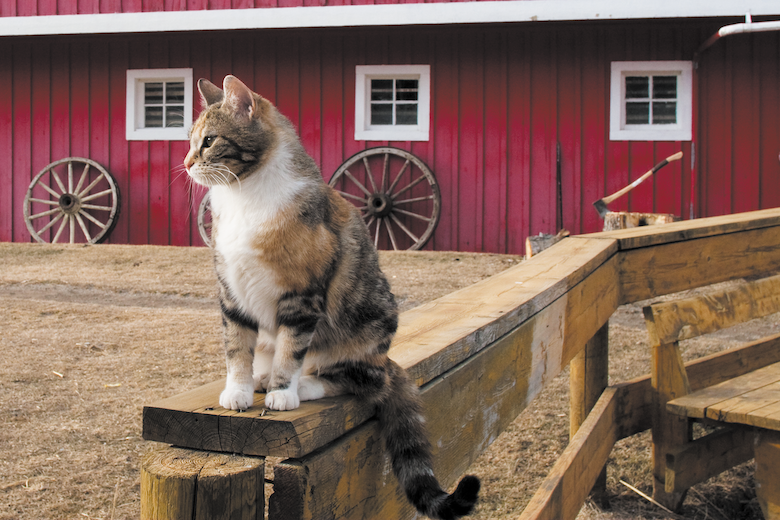Generally speaking, it’s best to leave a colony of feral cats where they are, using trap-neuter-return to control the population. But sometimes that’s just not possible. Whether it’s new development destroying a place where community cats live, a hostile neighbor harming the cats, or a hoarding situation where there’s an overwhelming number of poorly socialized cats, sometimes a colony just needs to be moved. That’s where Barn Cats, Inc. (BCI), comes in.
Based in Lewisville, Texas, BCI finds rural homes for feral cats whose colonies are being displaced. The organization works across a 37-county area in north Texas and five counties in southern Oklahoma, relocating cats that need safe, new homes. Since the organization formed more than 16 years ago, it has found rural homes for more than 8,000 community cats.
How it all started
“I used to do just regular adoptions with a group, and someone asked me if we could find placement for some cats in a neighborhood,” says BCI executive director Peggy Atkerson. A pregnant cat had shown up at a senior center in Lewisville and had a litter of kittens. When Peggy went to check out the situation, she found that while the kittens were young and socialized enough to be placed in homes, the mother cat was pretty much feral. “We did an article [about the cats] in our local small-town newspaper, and three or four people with barns volunteered” to take the mother cat, she says. “Then a group in the Dallas area asked for help in placing feral cats.”
It quickly became clear that there was a need for an organization that could find homes for feral cats who couldn’t stay where they were. Peggy formed a 501(c)(3) corporation so she could raise funds more effectively, and Barn Cats, Inc., was born.
How it works
“People call us to request cats,” Peggy says. “They need cats to control rats or other predators like snakes.”
Peggy used to keep 18 large cages in her home as a place to keep feral cats that needed to be relocated. “People would call me [about cats that need placement] and I’d say, ‘I have three cages open,’ and we’d start there” with the rescue and relocation effort.
If cats came into Peggy’s care together, they left together. And when shelters would call asking for feral cat relocation, “I would ask where they came from in the city and if they came from the same place. If they did, they’d go out together; if not, they’d be placed with cats of the same temperament and size,” Peggy says.
Before being placed in barn homes, BCI requires that cats be spayed or neutered, vaccinated against rabies and distemper, and tested for feline immunodeficiency virus and feline leukemia.
Every time feral cats are placed in a new barn location, they have a two-week relocation period, living in large cages in their new barn homes while caretakers provide them with food and water. After the two-week period is up, the cats are typically oriented to their new home and are not likely to run off to where they used to live, so they are allowed to start roaming the property.
“We always encourage people to take at least three,” Peggy explains. “If you take one and you lose one, you’ve got zero; if you have two and one runs off, you’ve only got one. If you have three cats and one runs off, you’ve still got two, so that seems to work out best.”
Safety considerations
There are two types of cats BCI never places in barn homes: white cats and cats younger than 8 months of age. “Smaller cats get carried off by predators,” she explains. “Solid white cats reflect moonlight and are a coyote target.”
BCI has placed feral cats in chicken coops, warehouses, sheds, garages, mobile homes, tack rooms and plant nurseries. The organization looks for a site where either someone lives or people come each day, so the cats can be fed. The barn or other structure must be away from roads or highways to minimize the risks that the cats will be run over as they roam their new territory. The structure must have doors that close at night to keep the cats safe from predators during the relocation period.
Does it work? Yes. The organization is getting “repeat business” from people who had adopted feral cats previously because they had good experiences with their first barn cats. Peggy says:
“Just in the last week or so, I sent out a fundraising letter, got a donation back from a lady and on the outside of the envelope, she wrote ‘No rats, no mice, no snakes since our barn cats came!’
“Yes, we’re putting them in barns in the country, and not all of them survive,” Peggy says. “But none of them survive at the shelter, so we’re at least giving them a second chance.
To learn more visit barncats.org or follow them at facebook.com/BarnCatsInc.


